Designing molecules often starts with a good sketch. But many molecular modeling tools lack an intuitive way to draw molecules while simultaneously seeing their 3D structure evolve. If you’ve ever wished you could build and edit molecules directly in 2D while keeping things in sync with 3D, you might be interested in how SAMSON’s Interaction Designer handles this.
Let’s take a closer look at how you can use SAMSON’s Interaction Designer to create molecules directly in 2D, whether from scratch or by modifying existing fragments.
Starting a New Molecule
To begin creating a new molecule in 2D, open the Interaction Designer and use the Edit > Design command. You can start from:
- a blank slate,
- an existing molecule in your document, or
- your current selection.
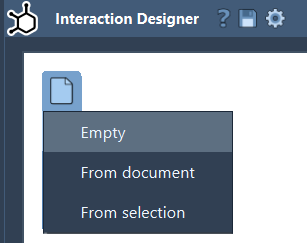
Building with Atoms
In the left panel of the Interaction Designer, click the Add button ![]() to enter building mode. By default, this adds carbon atoms.
to enter building mode. By default, this adds carbon atoms.
Click anywhere in the canvas to place an atom, then click on an existing atom to grow the structure.
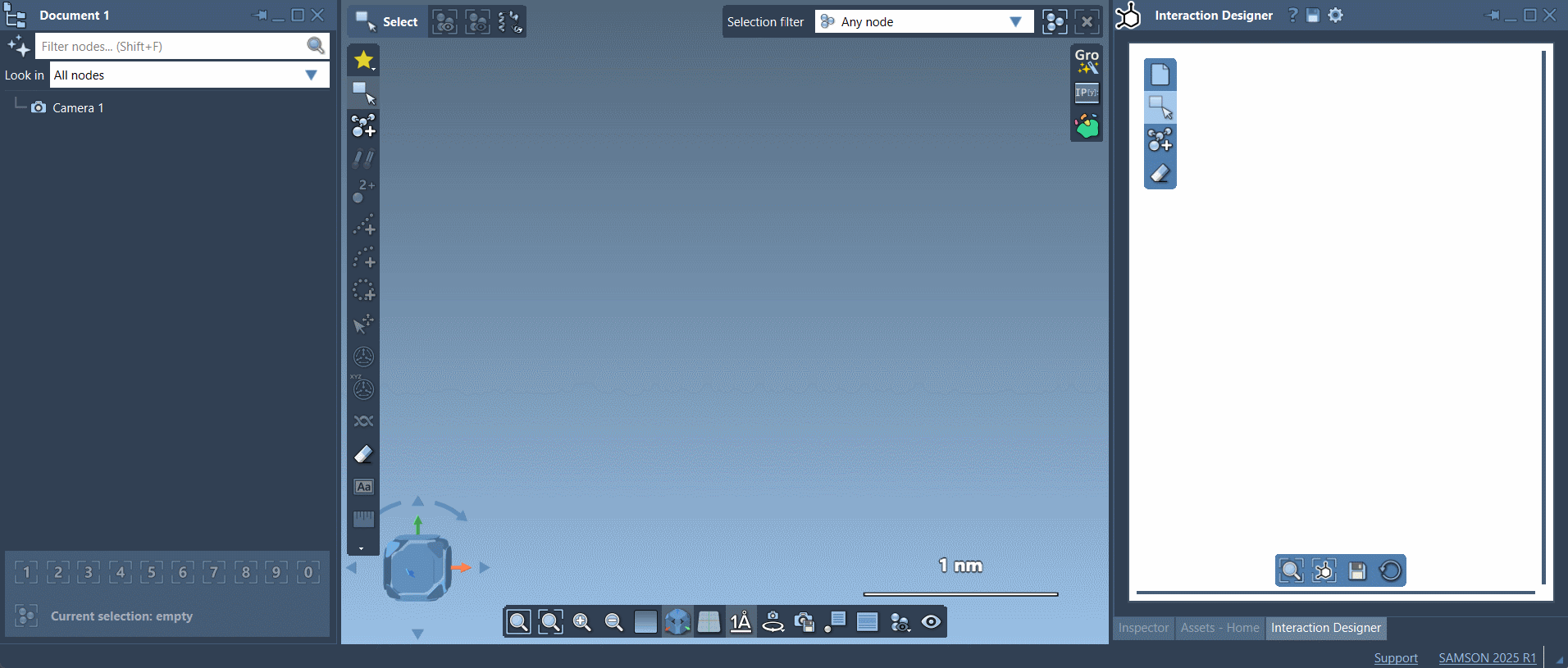
To switch atom elements, use the buttons at the bottom of the Asset Browser for common atoms like H, C, N, and O. For other elements, click the Periodic Table icon ![]() and select your desired element.
and select your desired element.
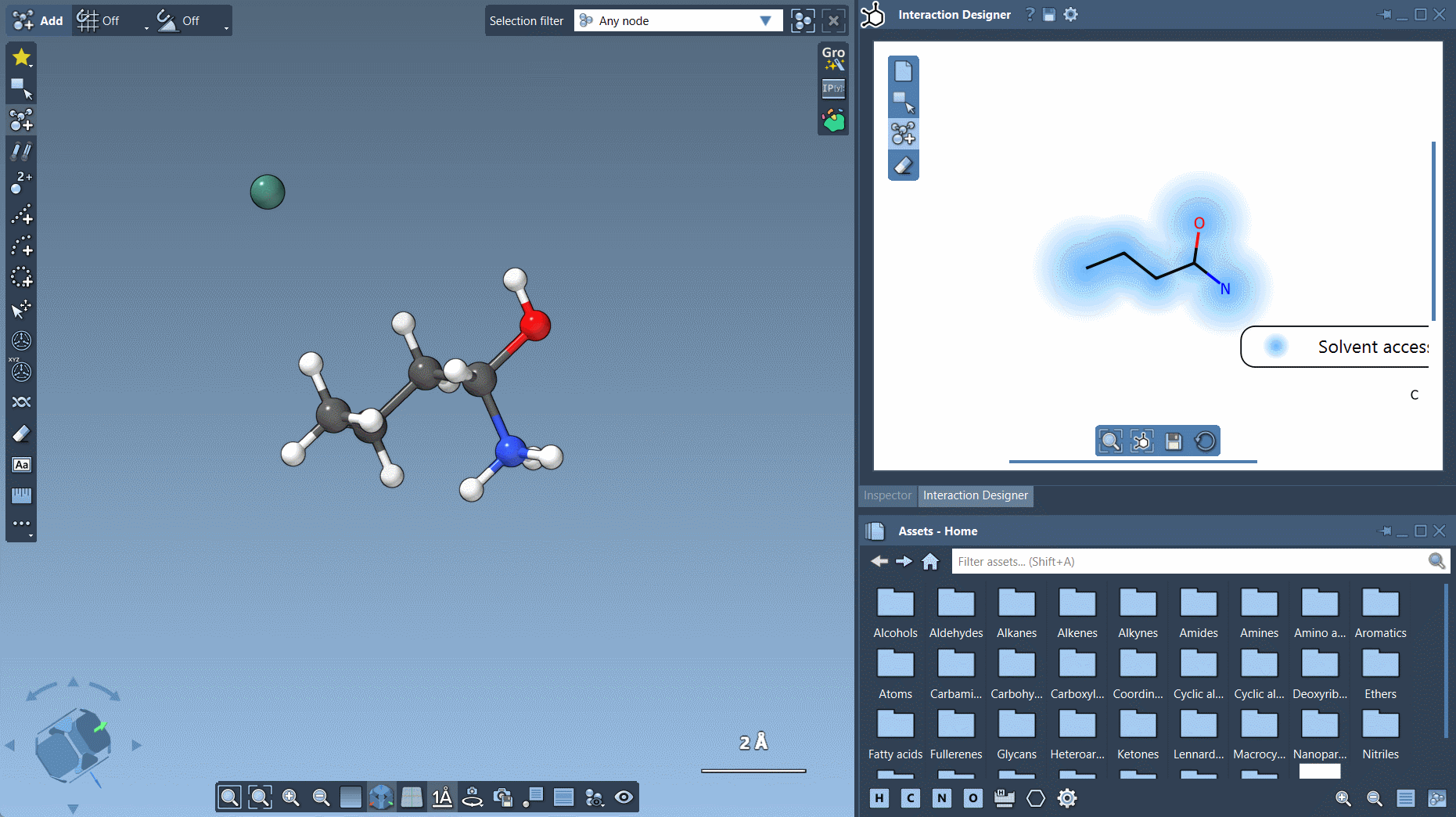
Building with Fragments
Fragments are reusable substructures like rings and common functional groups. To use one, pick it from the Asset Browser. Click to place the fragment, and connect it by clicking on an existing atom in the sketch.
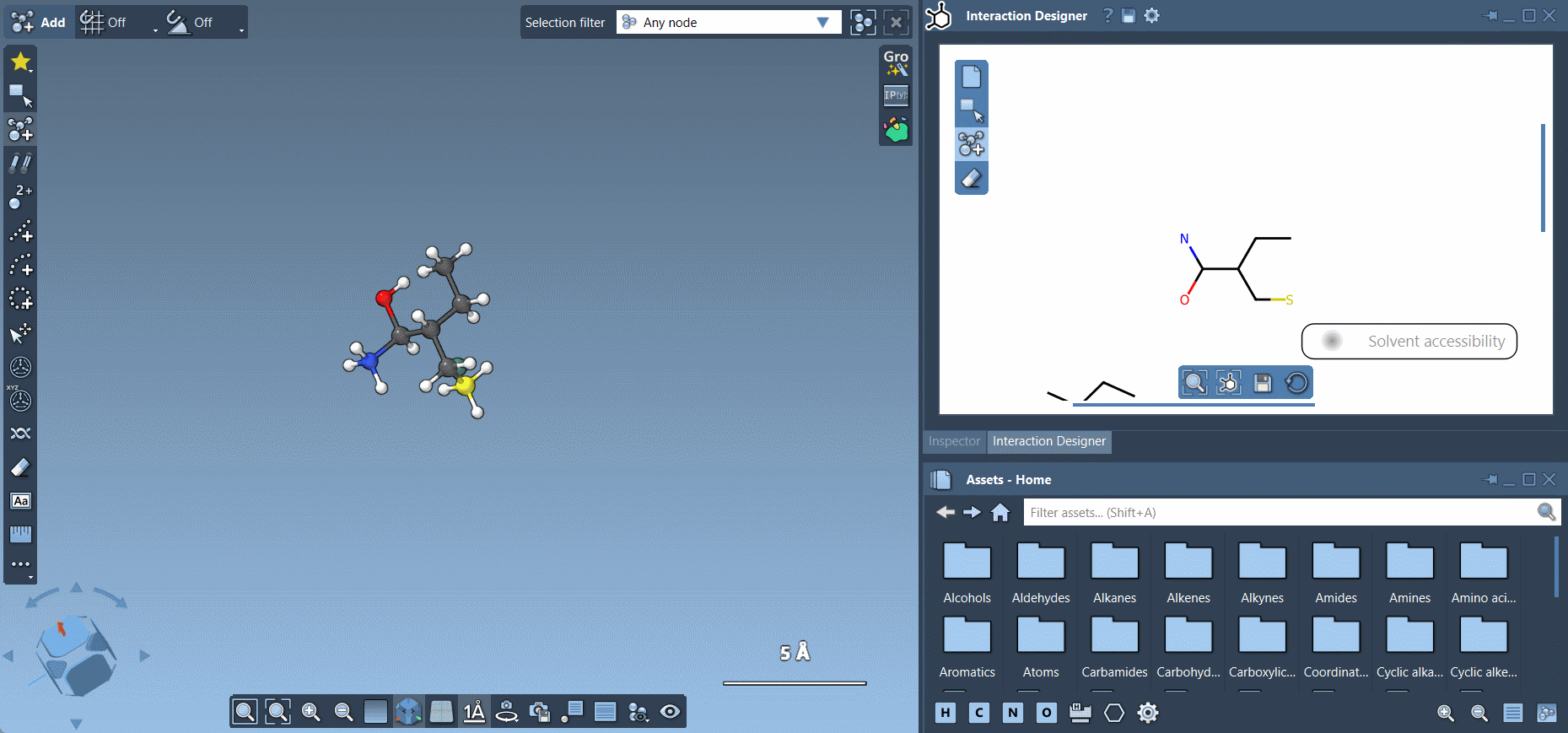
You can even choose a different pivot atom — the atom used to attach the fragment. Hold Ctrl (or Cmd on macOS) and click the atom in the fragment before placing it.
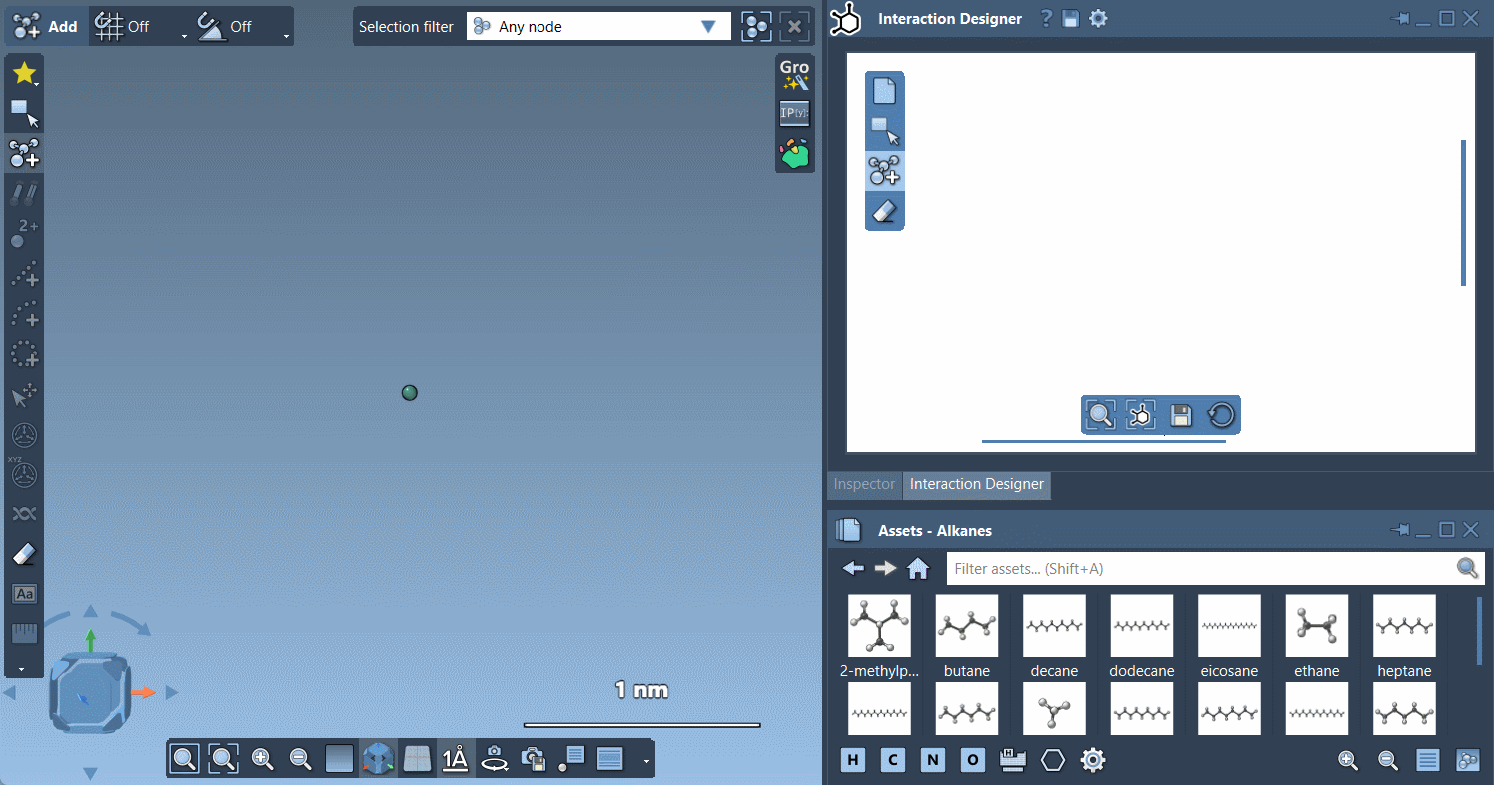
Removing Atoms
To delete atoms from your 2D sketch, click the Erase button in the left panel ![]() and click on the atoms to remove.
and click on the atoms to remove.
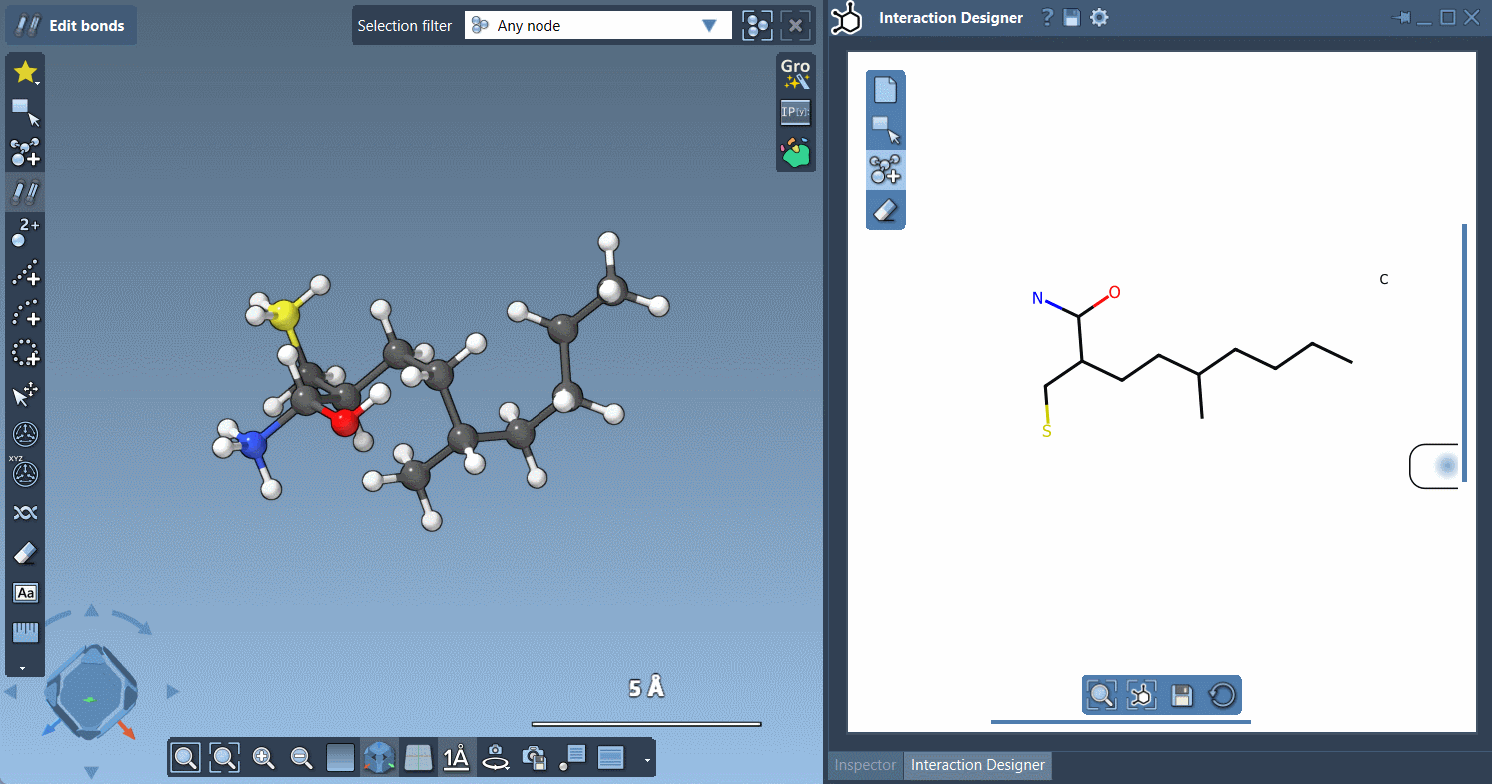
Live 2D–3D Synchronization
One of the useful features of the Interaction Designer is its real-time link with the 3D viewport. Any addition, removal, or change in the 2D sketch updates in 3D, and vice versa. This means no switching between tools or worrying about inconsistencies.
Zooming and Navigation
The 2D canvas supports intuitive navigation:
- Zoom in/out by holding Ctrl (or Cmd) and using your mouse wheel.
- Translate by clicking both the middle and right mouse buttons while moving the mouse.
Export Your Sketch
Once you’re satisfied with your 2D sketch or interaction diagram, you can save it in formats like png, jpg, jpeg, bmp, or svg. Just click the Save button ![]() in the bottom menu.
in the bottom menu.
Summary
If you’ve been looking for an interactive and synchronized 2D sketching tool for molecules, especially useful in protein-ligand studies or fragment-based design, the Interaction Designer in SAMSON offers a clean and responsive interface.
To learn more and explore additional features, visit the official documentation page: https://documentation.samson-connect.net/users/latest/interaction-designer/





